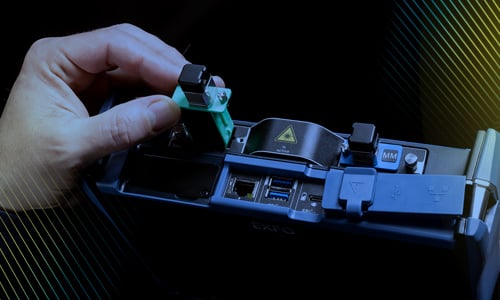Controlling the OPEX Epidemic
Despite all the efforts deployed by the industry over the past years, the latest Infonetics report still indicates a steady rise in the operating expenses of Carriers (source: Infonetics, Service Provider Capex, Opex, Revenue, and Subscribers Database, April 30, 2013). The same source states that in 2012’s $1.8T worldwide telecom market, operating expenses consumed $1.4T with fixed-line OPEX being the main drag.
This epidemic is well known, but its seemingly unstoppable progression makes it a threat to many providers.
Part of the underlying threat stems from network maintenance and troubleshooting. Just a few years ago, networks were quite simple – consisting of point-to-point links or rings. If there was a power issue on a single wavelength, it could be narrowed down to a transmitter or filter problem. If the power issue arose on all wavelengths, a connector, a splice or the fiber was the culprit. And if there was a noise issue affecting all wavelengths, it was a sure sign of erbium-doped fiber amplifier (EDFA) problems. Those were the days of simple, short and efficient tickets with low costs.
Fast-forward to today: ROADM and agile networks, multipoint-to-multipoint networks, and a mix of coherent and noncoherent transmission. All of the former issues still remain, but have been compounded with the addition of problems such as:
- Instantaneous differential group delay (DGD)
- Carrier leakage (where a transmitter is not modulated at 100%)
- Interchannel crosstalk
- Nonlinear issues appearing between interactions between coherent and noncoherent waves
Such issues may or may not change the OSNR value, but do contribute to a bad bit error rate. While treating only the symptoms may not be the ideal solution, finding the cause and cure is no longer a simple matter.
These issues cannot be solved with a single truck roll anymore. In fact, it may take several truck rolls in addition to a high level of specialized expertise, vendor assistance, time-related SLA penalties, and so on. Each ticket can therefore easily add up to tens of thousands of dollars, hearkening back to the earlier warning concerning this rampant epidemic.
As is true for any ailment, early diagnosis greatly helps to reduce side effects during treatment and improve prognostics. With this in mind, be sure to check out our video on the WDM Investigator solution. You’ll also find loads of information about DWDM impairments and diagnostic tools in our blog posts and on our website.




